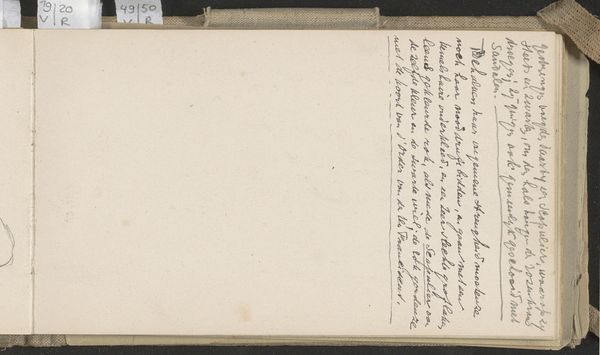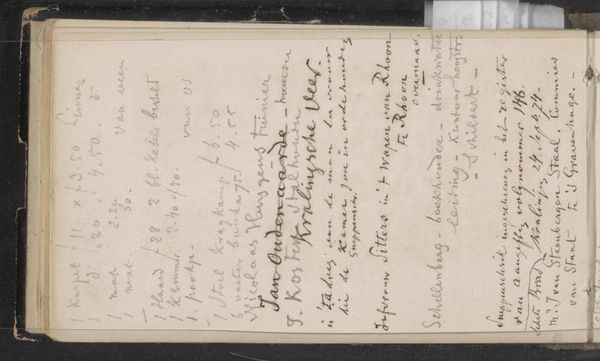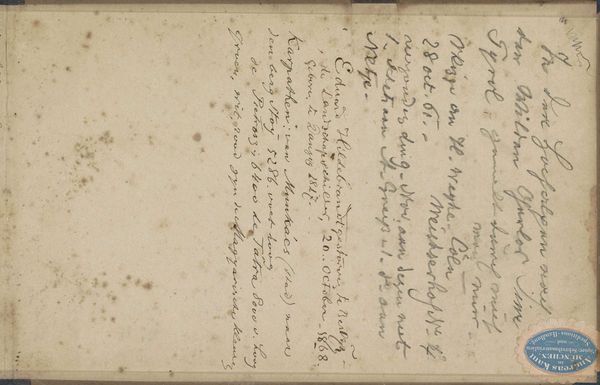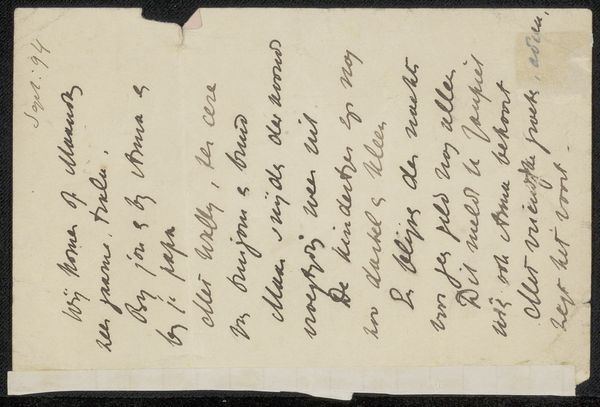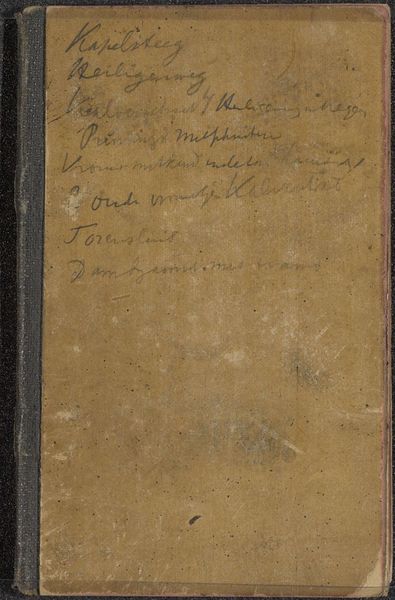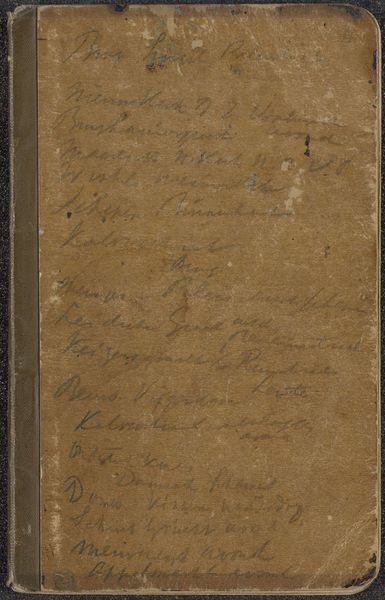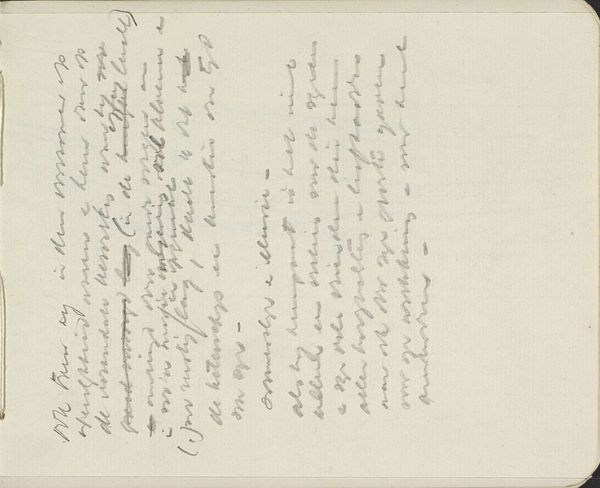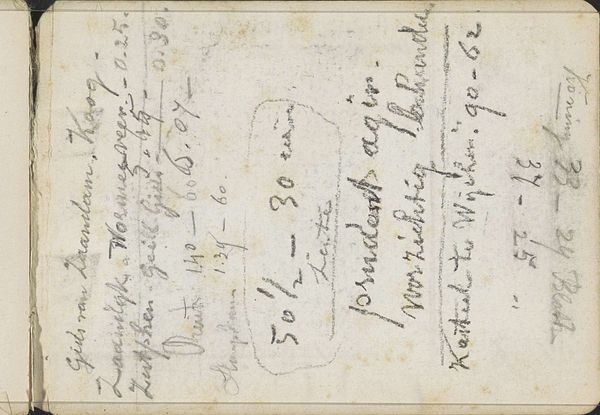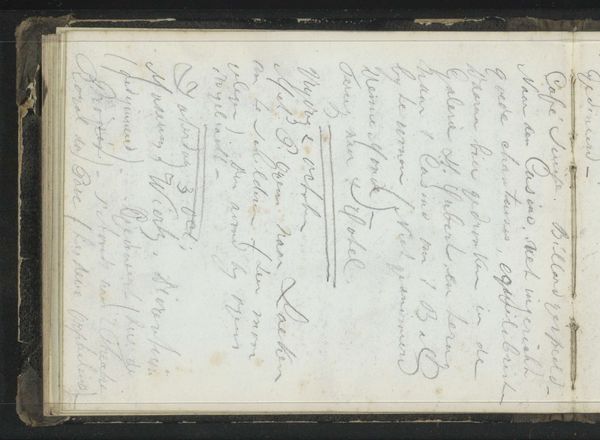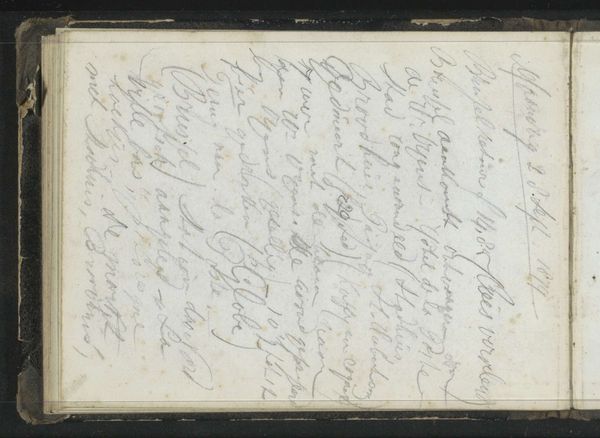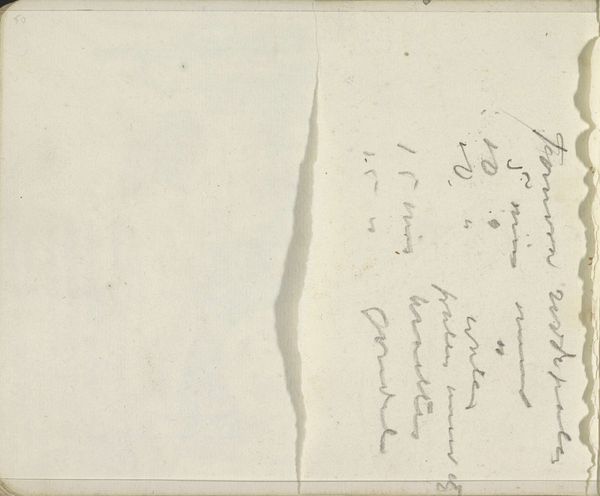
drawing, paper, pencil
#
drawing
#
paper
#
intimism
#
coloured pencil
#
pencil
#
stylized text
#
symbolism
Copyright: Rijks Museum: Open Domain
Here are Antoon Derkinderen's notes, done in graphite or ink, sometime in the late 19th or early 20th century. It’s like he’s thinking on the page, letting ideas spill out in a raw, unfiltered way. You can see the art-making as a process, right there. Look at the material quality of the paper. It's aged, stained, almost like a relic. And the writing—it's not precious or overly stylized. There’s a sense of immediacy, as if he’s capturing thoughts as they come. The strokes vary in weight, sometimes thick and bold, sometimes delicate and thin. It reminds me a bit of Cy Twombly's notebooks, but with a more intimate, personal feel. Notice how some words are larger, almost like headings, while others are crammed together, barely legible. It's a rhythm, a dance of language on the page. Derkinderen, like many artists, was engaged in an ongoing dialogue with art history. These 'Notities' feel like a private conversation, a glimpse into the mind of an artist grappling with ideas, experimenting with form. It’s like he’s saying, "Here's what I'm thinking, take it or leave it."
Comments
No comments
Be the first to comment and join the conversation on the ultimate creative platform.
